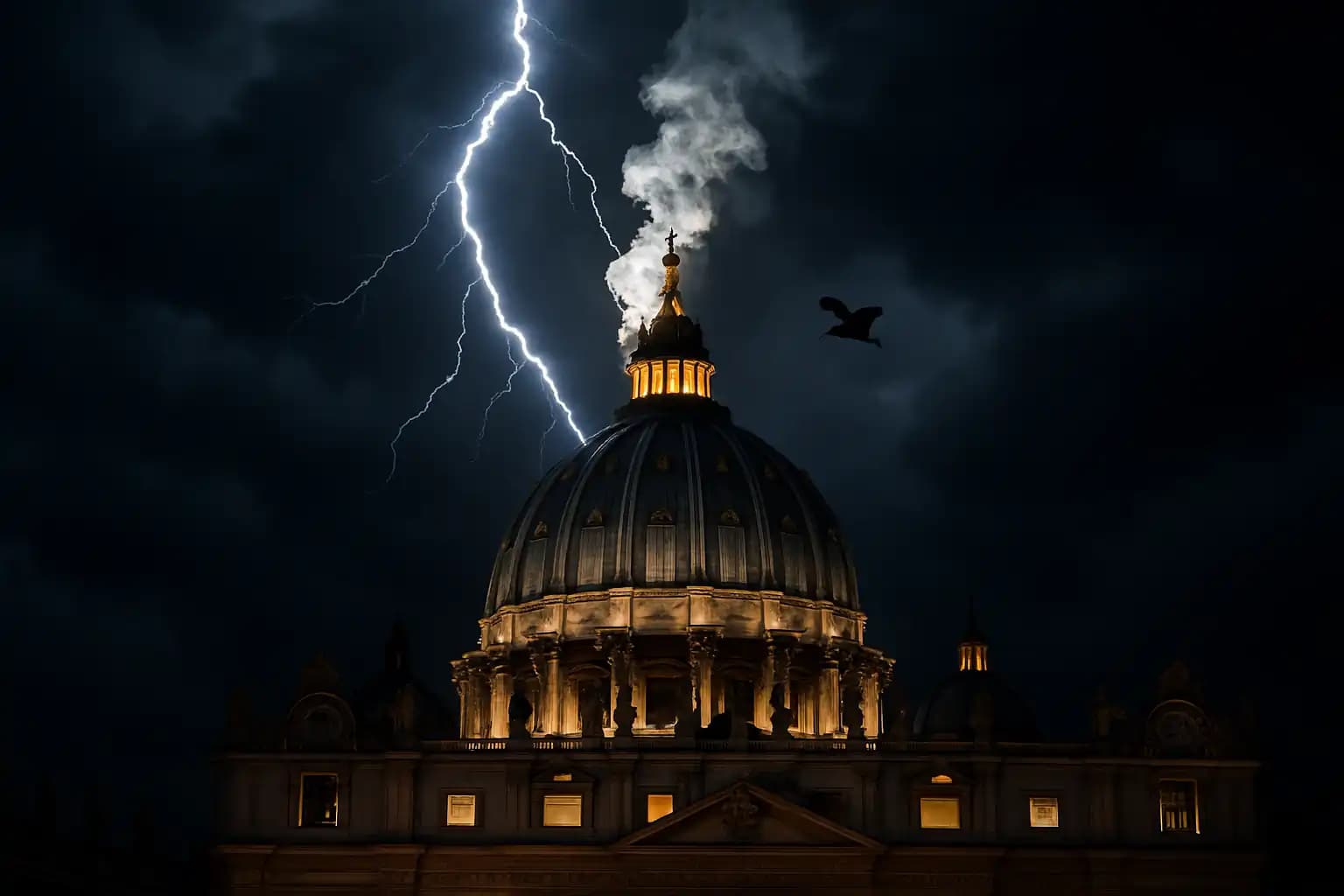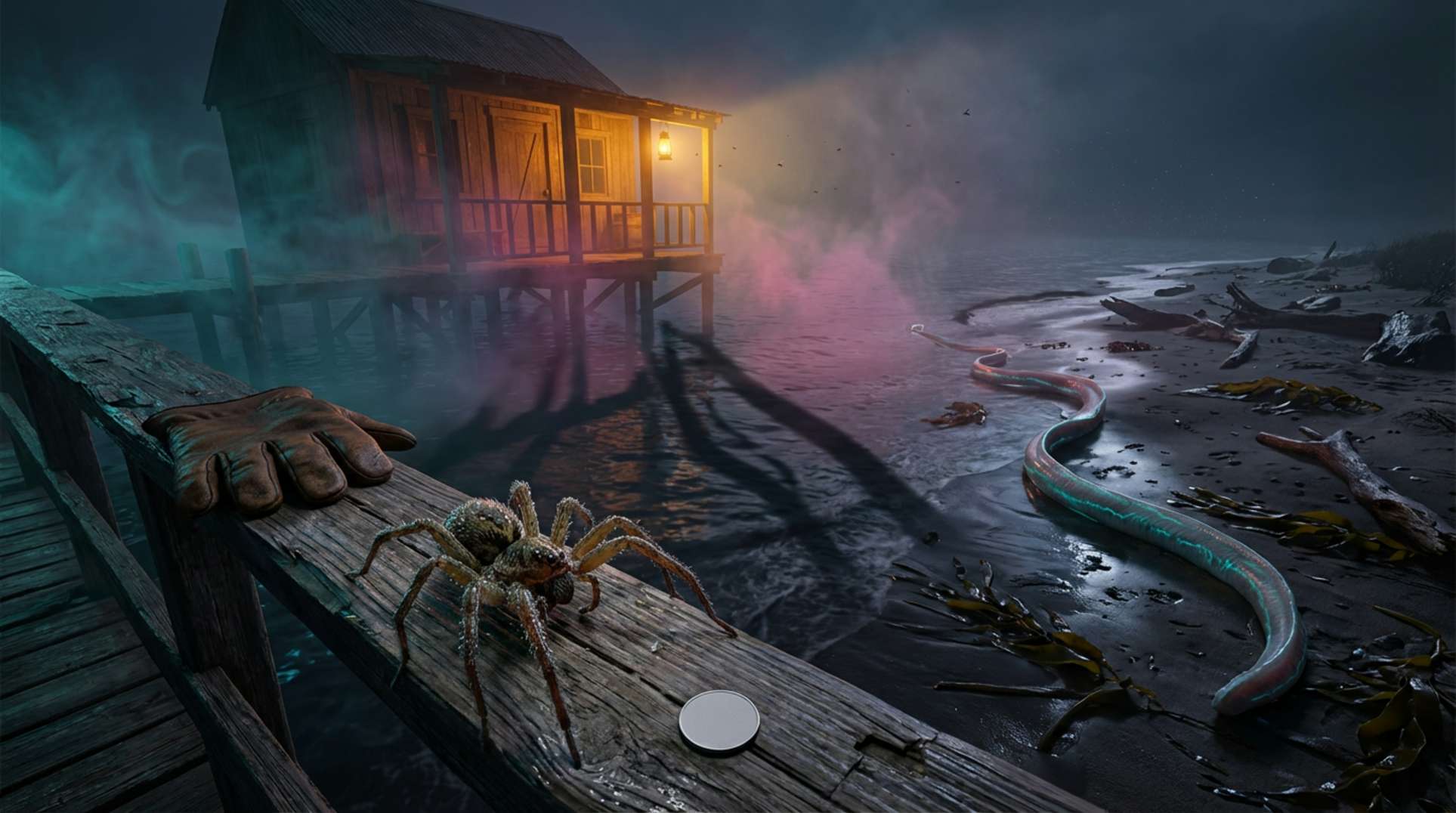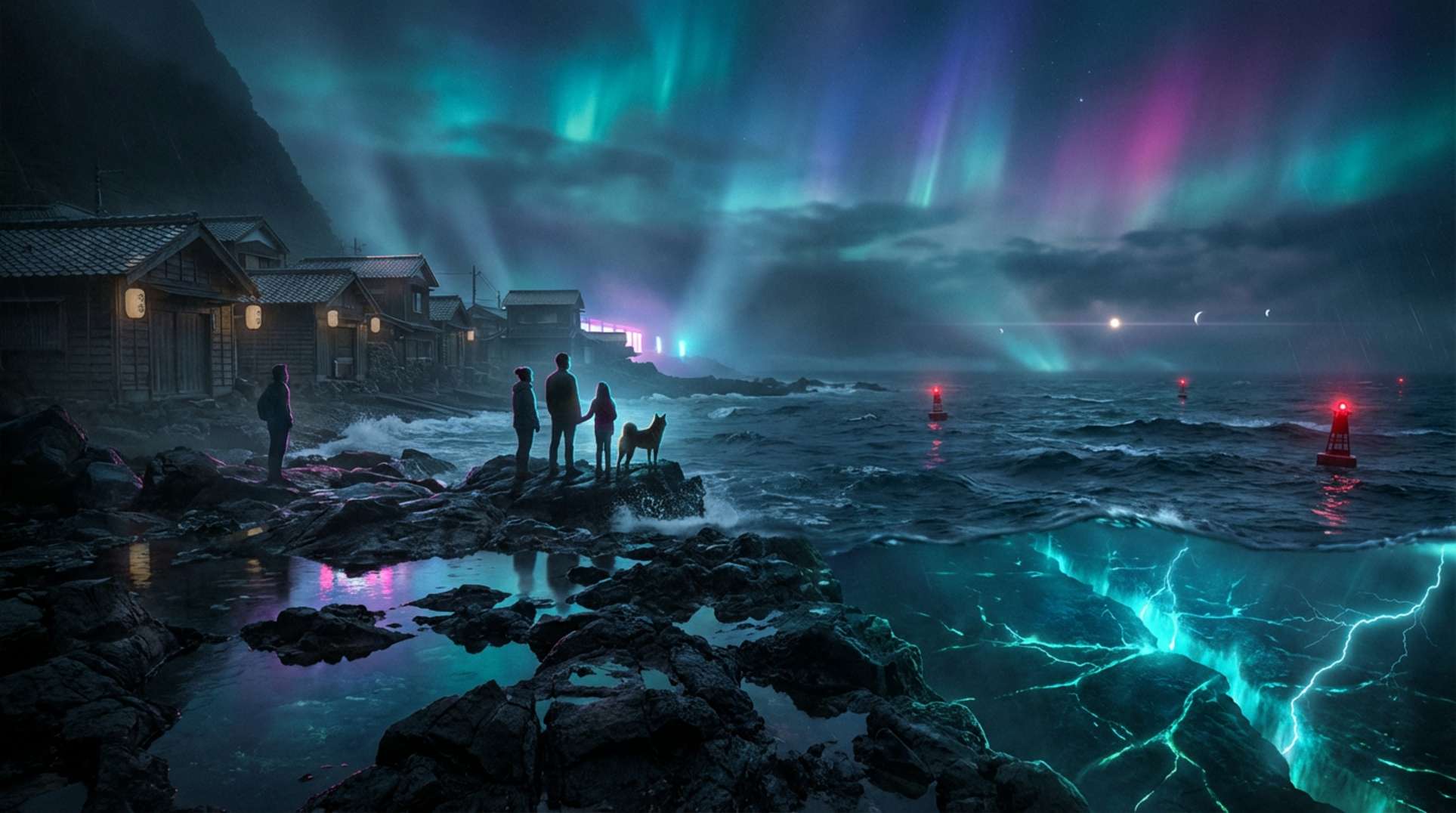Within hours of a new pope appearing on the balcony of St. Peter’s Basilica, the world saw three viral images: lightning striking the dome, white smoke above the Sistine Chapel, and a dove attacked by a seagull. Screens lit up from Manila to Milwaukee. Hashtags like #VaticanOmen surpassed a million mentions before dawn in Rome. To believers and skeptics, the convergence felt uncanny—part prophecy, part public relations. How do such symbols take shape? Why do they grip a data-driven planet?
The answer lies where religion, perception, and algorithmic amplification intersect. A papal transition blends medieval pageantry with real-time livestreams. Cameras focus on a copper chimney for a puff of white smoke; drones target St. Peter’s lightning rods; influencers analyze bird sightings near the Apostolic Palace. In this sensory overload, even basic weather reports can transform into cosmic commentary. Let’s explore the literal and figurative elements that turned a Vatican succession into a global saga of signs.
Lightning at the Vatican: Coincidence or Celestial Commentary?
The most replayed clip of the night came from the BBC, capturing a jagged arc of electricity across the basilica’s cupola. The footage, archived at BBC News, gained millions of views in hours. Atmospheric scientists noted that winter thunderstorms hit Rome every season; a copper dome is an obvious target. Yet symbolism overshadowed statistics as social feeds combined the strike with passages from Revelation and modern thrillers like Angels & Demons.
Newsrooms sought context, revisiting the spectacle after Pope Benedict XVI’s resignation in 2013. That historical echo added gravitas, prompting outlets to quote passages on divine displeasure. High-definition imagery blurred the line between coincidence and omen—especially for viewers influenced by investigations into uncanny events, such as this look at Vatican symbolism. Amplified by algorithms, the lightning became less a weather report and more a prophetic headline.
White Smoke Tradition Meets Twenty-First-Century Spectacle
Long before electric lighting, smoke communicated from a sealed conclave: black for inconclusive votes, white for victory. Modern Vatican engineers burn ballots mixed with chemical dye for camera-friendly results. That choreography unfolded as thousands of smartphones aimed upward during the decisive exhalation. The New York Times featured the ritual in an article—waiting for the smoke that heralds a new pope—illustrating how centuries-old rituals combine with real-time streaming.
The paradox of secrecy and spectacle intrigues sociologists: cardinals vow silence yet perform a globally televised drama. This tension fuels conspiracy theories that thrive on partial information. Reports like this symbolism analysis examine how political commentators overlay modern power struggles on papal rituals, transforming an internal church election into a geopolitical chess match.
Historically, the papal conclave isolated voters from external pressure. Today, isolation is impossible; cardinals enter the Sistine Chapel knowing an errant puff of smoke could trend globally in seconds. This awareness shapes media strategy and crowd psyche, turning each rite step into fodder for interpretation.
The Dove and the Seagull: Avian Drama as Digital Parable
Just after the “Habemus Papam” announcement, another visual flashpoint emerged. Two white doves released as symbols of peace flew above St. Peter’s Square—only to be attacked by a crow and a seagull. High-resolution photos of the encounter, documented by Inside the Vatican, sparked debate. Animal behavior experts provided mundane explanations: territorial birds, bright feathers, open sky. Meanwhile, conspiracy forums wove the incident into narratives about deception and false peace, echoing anxieties expressed in this examination of messianic panic.
The digital timeline sped up: within ten minutes, clips of the bird clash appeared with captions predicting global conflict; within an hour, they featured in TikTok montages with ominous synth beats. This speed highlights the modern feedback loop: symbolism appears, amateurs remix it, and the remixed version reenters mainstream news. Researchers studying attention spikes—like those in this psychology feature—note that emotionally charged images consistently outperform policy-heavy stories.
Media Velocity and the Business of Omens
These spectacles—lightning, smoke, birds—generated revenue for platforms and broadcasters. Ad slots sold at premium prices, and vendors offered “Lightning Pope” hoodies by morning. The phenomenon mirrors monetization models explored in this critique of apocalyptic branding. Algorithms crave engagement, and nothing captures attention like an apparent sign from heaven.
Financial markets react too. Futures traders monitor Vatican events for ripple effects on Italian tourism and gold prices, reflecting risk-on reactions explored in this geopolitical forecast. The spiritual transforms into a speculative asset, reinforcing a cycle where myth and money fuel each other.
Interpreting Signs in an Age of Data Abundance
Yet reality provides a calmer view. Meteorologists logged dozens of lightning strikes across Rome that evening; cameras caught only one. Chemists adjust smoke coloration to avoid confusion like the 2005 incident with gray plumes. Ornithologists confirm gulls prey on smaller birds in city squares. Interpretation relies not on rarity but on resonance. Symbols remain potent because they condense complex emotions—hope, fear, renewal—into single frames.
Theologians remind us that Christianity wrestles with a paradox: the mundane physical world serves as a vessel for divine messages. In that light, an electrical discharge carries metaphorical weight regardless of its frequency in weather statistics. A balanced approach neither dismisses symbolism nor yields to superstition. It seeks context, often absent from social-media cycles.
Balancing Awe and Inquiry for Future Conclaves
What lessons arise for the next round of white smoke? Media literacy should accompany theological education. Viewers can appreciate ritual beauty while verifying sources and timelines. Journalists might pair viral clips with explanations of lightning-rod physics or bird migration routes. Platforms could boost such context algorithmically, even if it affects engagement metrics.
The Vatican adapts as well. After past smoke confusion, engineers installed electronic bell alerts; future conclaves may add lightning detectors to prevent misinterpretation. Still, no technology will quell humanity’s desire for signs. As long as a pope stands on that balcony, the sky over St. Peter’s will serve as a stage for imaginations worldwide.
Ultimately, perhaps the strangest occurrence after a new pope’s election is not the lightning or a rogue seagull, but our collective rush to decode every flicker in the Roman night. If you seek deeper exploration of symbols, risks, and the fine line between mystery and misinformation, watch Unexplained.co. Until the next sacred smoke billows, remember: meaning often emerges not from the clouds above but from the stories we create below.




